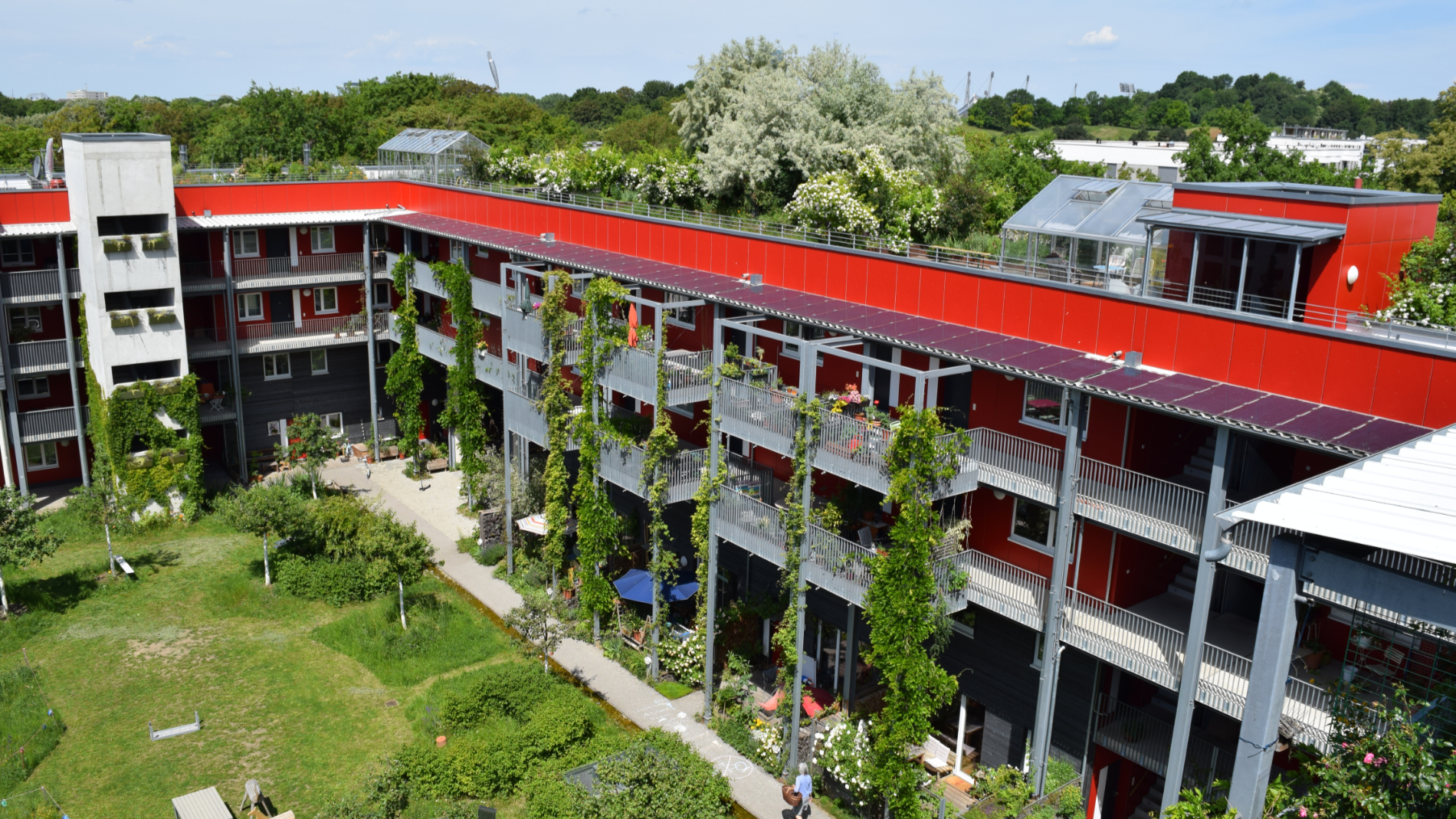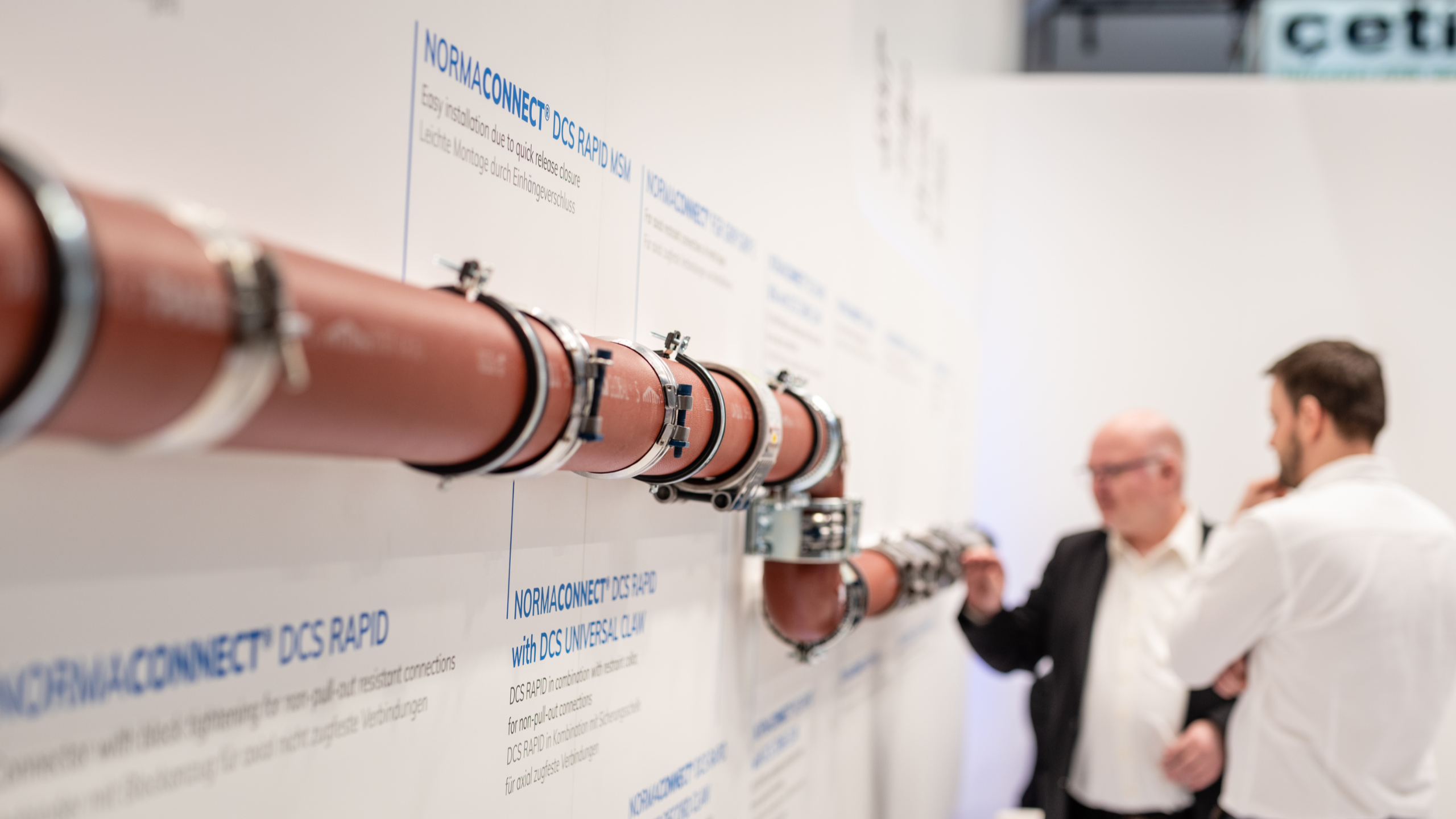Irrigating the green lungs of buildings

Green roofs and façades are not only aesthetically pleasing, they also offer tangible ecological and economic benefits. For example, they reduce heat islands and air pollution in cities, bind CO2 and collect rainwater. Additionally, green roofs and façades create more biodiversity as a habitat for plants and insects, which improves the quality of life in urban areas – and boosts property values.
Highlights at the ISH trade fair include the right components and systems for green roofs and façades, as well as the latest trends for green cities:
Green roofs: types, structure and benefits
Basically, a green roof consists of several layers: root-resistant sheeting, a drainage and water storage layer, a filter fleece and a growing medium in which the plants take root. All the layers of a green roof must be precisely aligned to avoid waterlogging and ensure optimal irrigation. Engineers and architects must also take the additional weight of water into account when planning the building.
Green roofs come in two main types:
- Extensive green roofs with a thinner layer of growing medium (up to 15 cm) in which hardy plants such as moss, grasses or sedum can take root. This cost-effective option is suitable for flat or gently sloping roofs.
- Intensive green roofs with a thicker growing medium layer up to 60 cm deep that can accommodate larger plants, including shrubs and small trees. A stable roof structure is a prerequisite for this kind of green roof.
Green roofs are easy to maintain, can be installed on many buildings and, at around €100 per square metre, are considered to be more cost-effective than green façades.
Green roofs can absorb up to 80 percent of rainwater, thus taking some of the pressure off the sewage system, for example, during heavy rainfall. Synergies with solar technology are particularly interesting because green roofs reduce the ambient temperature and thereby improve the performance of solar modules. Solar installations can, in turn, cover the energy needs of the irrigation systems for green roofs – thus closing the circle.
Façade greening: types, structure and benefits
Like a green roof, a well-planned green façade can also have a positive impact on a building's carbon footprint. As a natural insulating layer, plants on a building's façade help reduce energy consumption for heating and cooling. Furthermore, green façades reduce noise and improve the urban microclimate.
Depending on the support structure used, there are two types of façade greening:
- In the case of a wall-mounted system, vertical plant pockets or plant cassettes are attached to the façade of the building. As there is no need for connection to the ground, wall-mounted greening offers a high degree of design freedom.
- Ground-based systems rely on climbers or self-adhesive species. Such plants are considered particularly easy to care for because they are supplied with water and nutrients directly from the ground.
The right irrigation and drainage systems for green roofs and façades
Combining customised irrigation and drainage systems for green roofs and façades with rainwater treatment systems ensures the long-term sustainability and functionality of green roofs and façades.
Green roofs require special irrigation solutions to cater for the water-permeable growing media. Therefore, systems that deliver water evenly and in controlled quantities are particularly important.
- Drip irrigation systems deliver water directly to the roots of plants, minimising evaporation and ensuring a targeted water supply.
- Micro-sprinklers produce a fine mist that gently wets the leaves.
- Fleece-wrapped drip lines distribute water evenly throughout the growing medium, keeping it moist for longer without saturating it in certain spots.
The irrigation of green roofs and façades benefits from intelligent automation: IoT sensors monitor irrigation in real time, while control systems regulate irrigation cycles as and when needed.
Green roofs and green walls are an essential part of the Green City. At ISH 2025, visitors can learn all about the latest technologies and systems for implementing these green solutions effectively and sustainably.
